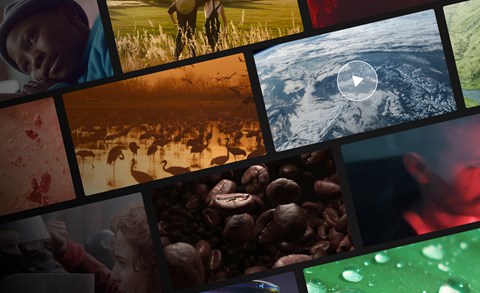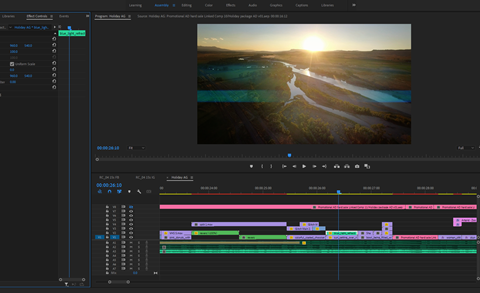In today’s climate, video marketing has never been more critical. In an age of attention deficit across the board, it’s important to make sure your content is as eye-grabbing as possible. In this post, we’ll make sure your marketing videos are targeted to your intended audience, explain the stages of production and lay out an array of video options to choose from.
What is the market for my marketing videos?
The first thing you’ll want to decide is what the goal of your video is. In order to do that, you’ll want to decide who your intended audience is. These 2 decisions go hand in hand since the marketing strategy will be very different for existing customers rather than new ones. Knowing who you’re trying to reach is fundamental in a video marketing strategy.
For your new clients or those unfamiliar with your content, you’ll want to make videos that simply raise awareness of your brand, product, or persona. These videos are designed to grab a viewer’s attention, make them realize something is missing in their life and that what you’re offering is an attractive solution. Explainer videos are terrific options for this stage.
For those that are aware of your brand, you’ll want to create content videos that show your product in action. Since these people are considering you among other options, they’ll want to see how your brand stands out from others. You can also advertise to other businesses (as in b2b video marketing) as a way to potentially gain new relationships with different producers. Product and social content videos are great options for this stage!
Finally, for clients who are on the cusp of purchasing something, you’ll want to make content that shows prospective customers they’ll be satisfied going with your brand. To do this, it helps to have former customers praising you or other creative content for showing satisfaction. Commercials and testimonials are terrific options for this.
What are the main types of marketing videos?
Commercials
Commercials are the most popular types of marketing videos. Whether they end up on television, YouTube or elsewhere, they typically are 30 seconds and try to create the most exciting representation of your product. The primary aim is to attract new customers, so the flashier the production and the slicker your commercial looks, the better. You’ll also want to make sure your commercial has as broad an appeal as possible, so the messaging should be wide and inclusive. When done right, this is one of the most effective types of video marketing there is.
Social content videos
Social content videos are becoming increasingly more popular in the age of social media. These can be uploaded to your stories on Facebook or Instagram, fodder for your LinkedIn profile or placed on your Twitter feed. Online video marketing like this is a great way to stay in touch with existing followers or people who are new to your brand.
It’s best to keep these videos short (around 30 seconds) as eyes tend to scroll quickly down social media feeds. It’s also great to take advantage of the unique features of the format, such as muted autoplay and video looping. These features can open room for creativity and hopefully gain loyalty with your followers.
Explainer videos
Explainer videos are great for raising awareness of your brand to a broader audience. It should accomplish two delicate tasks: 1) show prospective clients why they need a product like yours and 2) explain why your product is the best fit for them.
These are great introductions for your brand or service. Usually, you’ll want to aim for brevity and impact, as you’ll want to show why your product solves a seemingly insolvable or complex problem. When done right, this video marketing format can be perfect for your product.
Product videos
Product videos show your product in action! They typically show the different features of products and advertise the qualities that make them sell or stand out from the competition. These types of videos are generally geared toward people unfamiliar with your product or customers who rely on other products. Showing off your product’s utility, beauty, and necessity in a 30-second stroke will help deliver more customers.
Testimonials
Testimonial videos are great options for showing credibility to your brand or product. They are one of the types of video marketing examples that lets your satisfied customers speak directly to potential ones. You’ll want to make sure your testimonial comes off as authentic and that the existing customers once shared the same concerns as previous ones. This will make it less likely that the piece comes off as “puff” and that you can reassure future customers their concerns will be answered.
Now, how do I make a marketing video?
Now that you have your intended audience figured out and what type of content to pair that with, you’re ready for the next stage of your video marketing strategy. Deciding what video to make can be easy, but making a video is another matter entirely! No need to worry, though.
Pre-Production
In this stage, you’ll want to get your ducks in a row for the actual shoot. This will include making sure that your script is locked, that you’ve storyboarded everything, that you have your locations and personnel booked. Bigger productions will require more lead time, so make sure that if you’re shooting a commercial or elaborate social content video, you’ll be better off taking the time to prepare. As the saying goes, “Whatever you don’t prepare for, you pay for in the performance.”
Production
Now to the actual shooting of your video! Although shooting can be chaotic, the work done in pre-production will set you up for success. You’ll want to make sure that you are consistent with the audio/visual quality, that you stay on schedule and budget, leave enough time to set up proper lighting and pay attention to clashing styles between costume/production design/makeup. You’ll also want to make sure that talent is appeased, and that you wrangle in extras when need be.
Post-Production
Here, you’ll move on to editing and putting on the final touches of your video. Make sure your video editing software supports your video and audio files and that you bring someone on who can cut together the finished product you want.
Using stock footage in marketing videos
Budget is often an issue when making a marketing video, relying on shoots alone could eat your budget fast. Stock footage is an affordable way to create professional-looking videos without breaking the back. Whether you’re missing a shot, looking for inspiration or have a tight budget, Artgrid supplies plenty of royalty-free stock footage to fit your needs.
Out of all the stock video trends of 2021, Artgrid has a host of categories to serve your brand. Whether you’re looking for something more corporate, motivation-oriented, geared toward social media or something to make an emotional impact, Artgrid has you covered.
Conclusion
Now, you should be equipped with a sound knowledge of all the stages of video marketing. Once you decide who your intended audience is, you can pair that with the type of video you’ll make. Having a sound knowledge of the phases of production will ensure that you’ll be able to streamline the process. Finally, having a precise understanding of the different types of videos out there can give you clarity in choosing which is best for your brand. Add all of these elements together, and your video marketing strategy is ready to make your brand shine above the rest!






